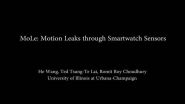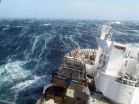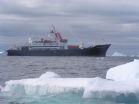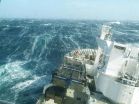(Press-News.org) They're the latest rage in jewelry and gadgetry, but like all computer devices, smart watches are vulnerable to hackers, say researchers at the University of Illinois at Urbana-Champaign.
Using a homegrown app on a Samsung Gear Live smart watch, the researchers were able to guess what a user was typing through data "leaks" produced by the motion sensors on smart watches. The project, called Motion Leaks through Smartwatch Sensors, or MoLe, has privacy implications, as an app that is camouflaged as a pedometer, for example, could gather data from emails, search queries and other confidential documents.
The work, funded by the National Science Foundation, is being presented this week at the MobiCom 2015 conference in Paris.
"Sensor data from wearable devices will clearly be a double-edged sword," said Romit Roy Choudhury, associate professor of electrical and computer engineering at Illinois. "While the device's contact to the human body will offer invaluable insights into human health and context, it will also make way for deeper violation into human privacy. The core challenge is in characterizing what can or cannot be inferred from sensor data and the MoLe project is one example along this direction."
The app uses an accelerometer and gyroscope to track the micro-motion of keystrokes as a wearer types on a keyboard. After collecting the sensor data, researchers ran it through a "Keystroke Detection" module, which analyzed the timing of each keystroke and the net 2D displacement of the watch. For example, the left wrist moves farther to type a "T" than an "F."
While Illinois researchers developed MoLe, it is conceivable that hackers could build a similar app and deploy it to iTunes and other libraries.
Roy Choudhury's team said the rapid proliferation of wearable devices made them ask: Just how secure is the data? They approached this topic from the perspective of an attacker. Rather than directly developing security measures for smart watches, they aimed to discern ways that attackers can decipher users' information.
"There are a lot of good things that smart watches can bring to our lives, but there could be bad things," said He Wang, a PhD student in electrical and computer engineering at Illinois. "So if you think from that perspective--if there are any 'bad' things we could do--we can help other people protect their privacy, or at least make them realize there's a potential problem."
A possible solution to these motion leaks would be to lower the sample rate of the sensors in the watch, Wang says. For instance, the sample rate is normally around 200 Hertz, meaning the system logs 200 accelerometer and gyroscope readings per second. However, if that number is lowered to below 15, the users' wrist movements become extremely difficult to track.
While their work has yielded revolutionary results so far, there is still a long way to go in polishing the data-collection process. The team's current system can't detect special characters such as numbers, punctuation and symbols that might appear in passwords. The "space" bar or key also poses an obstacle. In addition, researchers can only collect data from the hand wearing the watch and from people who have standard typing patterns.
"There's a subset of people who don't type like that," said Ted Tsung-Te Lai, 30, a post-doctorate researcher at Illinois, who noted that the team will develop more models to account for typing differences in the future.
While a Samsung watch was used in this project, the researchers believe that any wearable device that uses motion sensors--from the Apple Watch to Fitbit--could be vulnerable as well.
Lai said, "We would just like to advise people who use the watch to enjoy it, but know that 'Hey, there's a threat'."
INFORMATION:
Researchers at Scripps Institution of Oceanography at UC San Diego have released details of a deep-sea site roughly 48 kilometers (30 miles) west of Del Mar (just north of San Diego, Calif.) where methane is seeping out of the seafloor, the first such finding in the region.
Scripps graduate students on a 2012 UC Ship Funds Program expedition aboard Scripps's research vessel Melville off San Diego County discovered the "Del Mar Seep" during the San Diego Coastal Expedition. Such methane seeps are fascinating environments because of their extraordinary chemical features, ...
Many of the drugs we take today to treat pain, fight cancer or thwart disease were originally identified in plants, some of which are endangered or hard to grow. In many cases, those plants are still the primary source of the drug.
Now Elizabeth Sattely, an assistant professor of chemical engineering at Stanford, and her graduate student Warren Lau have isolated the machinery for making a widely used cancer-fighting drug from an endangered plant. They then put that machinery into a common, easily grown laboratory plant, which was able to produce the chemical. The technique ...
The Southern Ocean has begun to absorb more atmospheric carbon dioxide (CO2) according to new research from an international team, including the University of East Anglia.
A decade ago scientists announced that the amount of CO2 being absorbed by the Southern Ocean had not increased since the late 1980s. And it was feared that this 'carbon sink' might have begun to saturate.
But new research to be published tomorrow (Friday) in the journal Science reveals that rather than stalling, the amount of CO2 being absorbed is on the rise again.
It is thought that changes ...
This news release is available in Japanese.
Inconveniently, the only current method to synthesize the chemotherapy agent etoposide is by using extracts from a plant, but researchers have successfully manipulated Nicotiana benthamiana (tobacco) to create a more immediate and potent precursor. Etoposide is a topoisomerase inhibitor used to treat a variety of malignancies, including lung cancer and leukemia. There is currently no way to produce etoposide without one of its precursors, podophyllotoxin, which is found in the slow-growing Himalayan Mayapple plant. Four ...
This news release is available in Japanese.
In this Policy Forum, Jonas Meckling et al. discuss the need to close the gap between climate science and policy, arguing that targeted policies and economic incentives are the answer, rather than broad carbon taxes. As policymakers convene at the United Nations Climate Change Conference in December, pinpointing the best policies is critical for a more sustainable future. In theory carbon pricing poses as an efficient solution, but this has yet to be seen in practice. As the authors point out, carbon regulation imposes costs ...
This news release is available in Japanese.
Patients with metastatic melanoma who have benefited from a new type of cancer immunotherapy don't appear to share the same tumor-produced antigens, according to a new report by Eliezer Van Allen and colleagues. If the molecular targets for the immunotherapy differ from patient to patient, as this study suggests, it may be difficult to predict which patients will respond to the treatment. The drug, called ipilimumab, is part of a relatively new class of cancer treatments called immune checkpoint inhibitors. The inhibitors ...
This news release is available in Japanese.
The Southern Ocean has increased its uptake of atmospheric carbon dioxide again, after showing signs of slowing uptake in the 1990s, according to a new report from Peter Landschützer and colleagues. The Southern Ocean is a huge player in carbon sequestration, accounting for up to 40% of oceanic uptake of atmospheric carbon dioxide. When earlier studies showed the Southern Ocean's carbon sink weakening, the findings raised concerns that the planet might lose a powerful way to remove the growing amounts ...
Breathe in, breathe out, in, out... Like a giant lung, the Southern Ocean seasonally absorbs vast amounts of carbon dioxide (CO2) from the atmosphere and releases it back later in the year. But on an annual average the seas surrounding Antarctica absorb significantly more CO2 than they release. Most importantly, these seas remove a large part of the CO2 that human activities emit into the atmosphere, thereby slowing down the growth of this greenhouse gas in the atmosphere, lessening the rate of climate change. Although the Southern Ocean represents no more than a quarter ...
Berkeley -- To speed up progress in tackling climate change, policymakers need to build political support by investing in clean-energy industries rather than first penalizing polluters, according to a new policy paper by researchers at the University of California, Berkeley.
In the paper, to be published Thursday, Sept. 10, in the journal Science, a multidisciplinary team of environmental, political and legal experts finds that instead of emphasizing cap-and-trade schemes and penalties on greenhouse gas emissions - strategies considered to be most efficient by many economists ...
MENLO PARK, Calif. -- Some of the inner workings of Earth's subduction zones and their "megathrust" faults are revealed in a paper published today in the journal Science. U.S. Geological Survey scientist Jeanne Hardebeck calculated the frictional strength of subduction zone faults worldwide, and the stresses they are under. Stresses in subduction zones are found to be low, although the smaller amount of stress can still lead to a great earthquake.
Subduction zone megathrust faults produce most of the world's largest earthquakes. The stresses are the forces acting on ...




